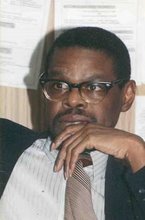The First Report of the Congressional Oversight Panel for Economic Stabilization December 10, 2008
Congressional Oversight Panel (COP) will release two public reports:
On Jan. 10, it will release a report that examines the administration of the TARP program, including the impact thereof on the economy to date.
On Jan. 20, COP will release a report providing recommendations for reforms to the financial regulatory structure. This report will provide a roadmap for a regulatory system that would revitalize Wall Street, protect consumers, and ensure future stability in our financial markets. Through these reports, the Oversight Panel will reveal the results of its investigations to the American people.
BACKGROUND
In response to the financial crisis, Congress passed the Emergency Economic Stabilization Act of 2008, authorizing the Treasury Department to commit up to $250 billion in taxpayer dollars, to be followed by another $100 billion and another $350 billion if warranted. The statute also created a Congressional Oversight Panel (COP).
The Act’s purposes are to “restore liquidity and stability to the financial system of the United States . . . in a manner that (A) protects home values, college funds, retirement accounts, and life savings; (B) preserves homeownership and promotes jobs and economic growth; (C) promotes overall returns to the taxpayers of the United States; and (D) provides public accountability.” From the passage of the Emergency Economic Stabilization Act of 2008 to the present date, Treasury has used its authority under the Act to provide 87 banks with $165 billion in exchange for preferred stock and warrants. Treasury further used its authority to provide AIG with $40 billion in exchange for preferred stock and warrants, and to provide Citigroup with a further $20 billion in preferred stock and warrants... (excerpted)
OBSERVATION
To restore stability to the financial system, the government must stop tinkering with the market. As any expert will tell you, there are no experts when it comes to the volatile mood swings in market behavior. Ultimately, market behavior is human behavior, insofar as behind every investment decision is a “decider”, fickle human beings.
What is going on, behind the scene, is a bunch of financial gurus trying to figure out something someone can understand: Human Behavior in making investment decision… Call it Paulson’s “Eeny-Meeny-Miny-Moe Dilemma” in Voodoo Trickle Down Economics.
Subscribe to:
Post Comments (Atom)





Eddie, hi, I just found your blog through AfroSpear. I'm a new member there and yesterday you clarified definition. Thanks.
ReplyDeleteAnyway, two things. I'm pretty certain the US is financially broke. I dread the worsening social conditions that will occur in 2009, from more banks closing to so many homeless and hungry people that our collective hearts will be broken in brand new ways.
Also, I see from your blog that you're heavily into advocacy. I think you'd like my current post. Check it out if you get a chance.
~ Kit